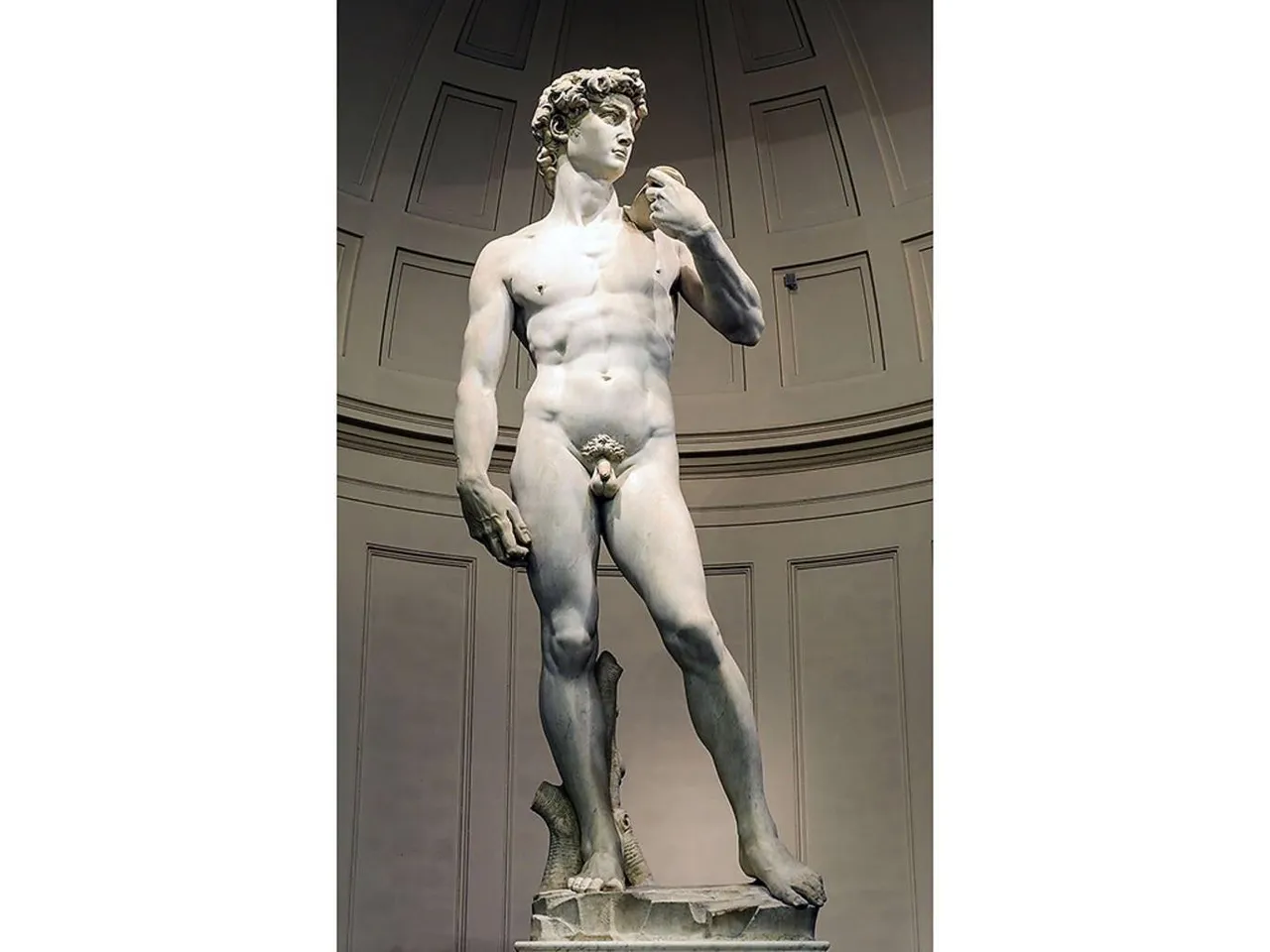
One of the most iconic works in all of art history, Michelangelo’s David had its origins in a larger project to decorate the buttresses of Florence’s great cathedral, the Duomo, with a group of figures taken from the Old Testament. The David was one, and was actually begun in 1464 by Agostino di Duccio. Over the next two years, Agostino managed to rough out part of the huge block of marble hewn from the famous quarry in Carrara before stopping in 1466. (No one knows why.) Another artist picked up the slack, but he, too, only worked on it briefly. The marble remained untouched for the next 25 years, until Michelangelo resumed carving it in 1501. He was 26 at the time. When finished, the David weighed six tons, meaning it couldn’t be hoisted to the cathedral’s roof. Instead, it was put on display just outside to the entrance to the Palazzo Vecchio, Florence’s town hall. The figure, one of the purest distillations of the High Renaissance style, was immediately embraced by the Florentine public as a symbol of the city-state’s own resistance against the powers arrayed against it. In 1873, the David was moved to Accademia Gallery, and a replica was installed in its original location.